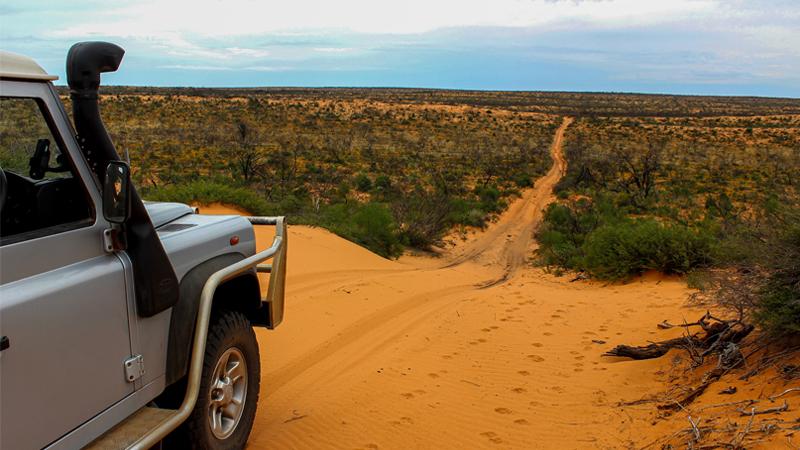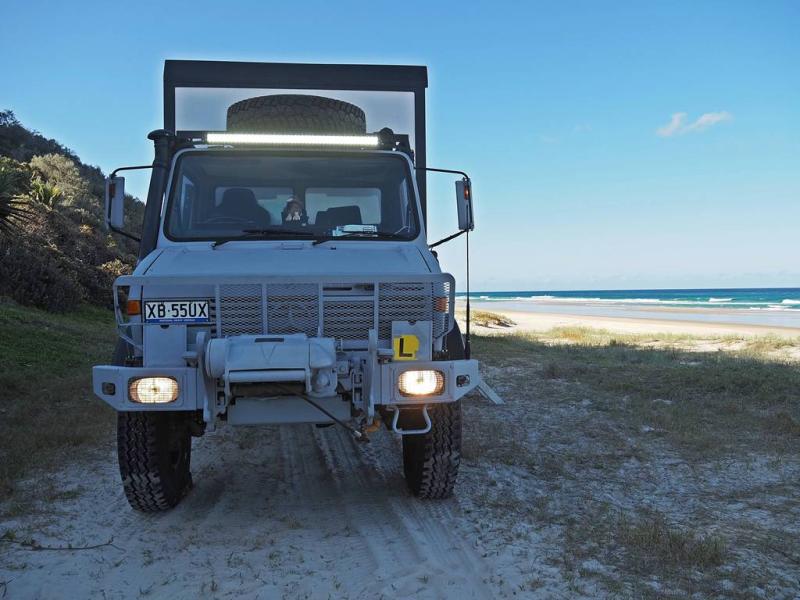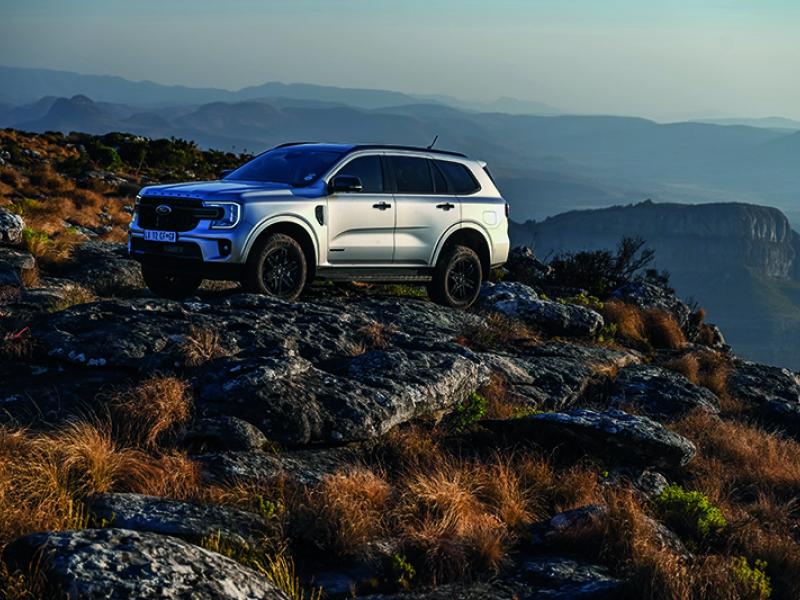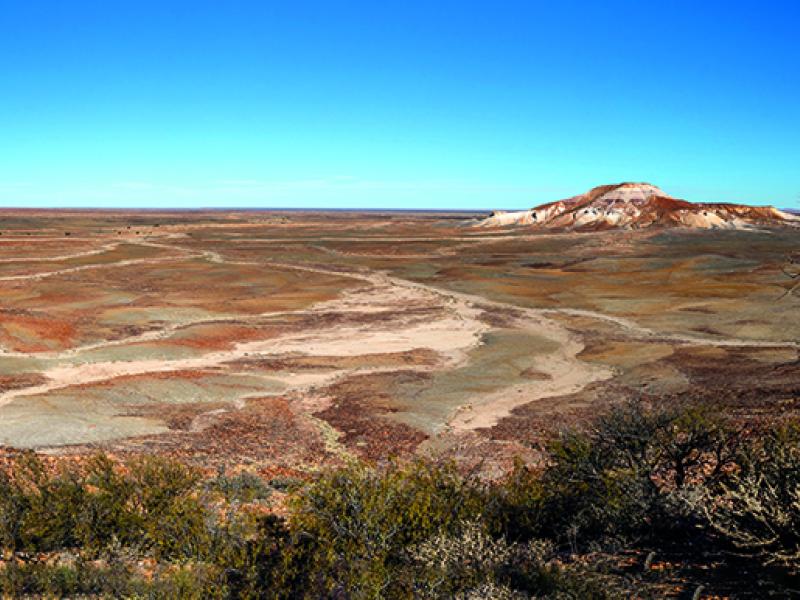Googs Track and the Simpson Desert - Part 2
Last month Merv Moodie introduced himself and his way of touring the great Aussie Outback – in a late-model Land Rover Defender bought and stored there between trips. This month he wraps up his two-part yarn with a daring late season solo crossing of the Simpson Desert and plans for a final hurrah trip once Covid-19 is under control again.
After returning home for a couple of months, I wanted to get in another trip to Australia before the year end.
This time it would be a solo trip, before it became too hot, as I had decided that if I was going to bring the Land Rover back to New Zealand, I would have to do early the next year before it become an illegal import (the rules around bringing 4WDs into New Zealand were changing and my vehicle no longer qualified after mid 2016).
I flew to Melbourne, then bussed up to Bendigo, to collect the Land Rover from where it was stored (same place as last time). This was mid October 2015.
My intention for the first part of the trip was to do Googs Track (often referred to as the ‘Mini Simpson’).
First port of call
Departing Bendigo, I made my way across to Robe, South Australia. This is a fishing port, and quite a lot of lobster are landed there and exported live to China. I’d been there several years ago and was keen to go back. As a past fisherman and current manager of a seafood factory in Christchurch which exports live lobster to China, I was interested to have another look.
At Robe I stayed in the camping ground a couple of kilometres from the port. I could hear the diesel engines of the fishing boats roaring into life between 4:30 and 5:00am; this was my morning alarm!
These boats were mainly 9-12 metres (40-to-50 foot) long, fitted with 372-447kW (5-600hp) diesel engines, mostly plaining hulls. Quite fast and impressive.
Departing Robe, I made my way up the coast to Adelaide, to have the vehicle serviced before going to Ceduna, in South Australia.
En-route, I visited the organ pipe rock structures in the Gawler Ranges National Park. Quite a unique type of rock structures, like nothing I had ever seen before.
Ceduna is the starting place to Googs Track, which is almost 200 km long, with most people making it a two-day trip up to the Trans-Continental Railway line.
I found the track quite easy; drop your tyre pressures down to 18 PSI and nothing is a problem!
V. enjoyable
I found the trip along Googs Track very enjoyable – I only passed one other vehicle on this trip. Passing the memorial cairn that was erected in honour of the work done by trail blazers, Goog and his son Dinger, it was only a short drive to Googs Lake where I spent the night. The biggest ‘lake’ is about one km in diameter (a big salt pan with no water in it) but you dare not drive on it, because you could lose your vehicle in the soft ground!
It was starting to get quite warm during the days (spring) – up to 30 degrees C, and when you stopped in the afternoons, you would have lots of Aussie flies to content with.
I’d often wear a veil hat, until I got my awning over the back door of the Land Rover up, where I could hide inside behind the safety of the fly screens.
From there, I made my way to Woomera, where there is a particularly good display of rockets and aircraft that had been used at the Woomera Rocket Range nearby. Then to William Creek, following the old Ghan Railway line. You get to see some of the old railway sidings, buildings, and water towers, then on past the old disused Algebuckina Railway Bridge, up to Oodnadatta, where I spent a night at the Pink Roadhouse. This is a unique, iconic, bright pink Australian outback roadhouse (where you can stop for food and fuel), - but man, was it rough!
Late start
Departing Oodnadatta, I made my way up to Mount Dare – the starting point to cross the Simpson Desert, from west to east.
The Mount Dare Hotel is a popular, iconic Australian landmark, and is often the kicking off point for people crossing the Simpson Desert.
However, by the time I got there, it was now so late in the season about a week earlier everybody had left the area because it was getting too hot. Up to 45 degrees C each day. The Simpson Desert is closed from the end of November till the middle of March because of high temperatures, daytime 50 degrees Celsius plus.
I was hoping to maybe tag along with another group of people doing the crossing, however it was at this point that I decided to do a solo crossing. As I said in my last story; “You only live once; how hard can it possibly be?” and “What could possibly go wrong?”
My safety net was: I had an emergency locator beacon, a satellite phone, and a guy called Barnsey, who lives in Birdsville, with a Deutz 1979 German 4WD ex-army truck that could rescue you if need be – as long as you deposited several thousand dollars into his bank account first.
Good call
The Simpson Desert Crossing was fantastic: all you needed to do was drop your tyre pressures, the first day to 18 psi, but the second day I dropped it down again, to 12-14 psi, which made a huge difference.
I had no trouble getting over the sandhills with the lower tyre pressure, and I had the vehicle in low ratio for the whole trip, to make it easier on the transmission – mostly in 4th and 5th gear low.
The experience of being there was just fantastic, and I discovered that I have a real fondness for desert travel; the vastness, the isolation, and the driving which at times, is quite technical, but it is something we don’t have the opportunity to experience in New Zealand.
It was over 45 degrees C during the day – and down to about 25C at night. Because it was so hot, I found I needed to drink a lot more water than I normally would; lucky it was nice and cold out of the fridge!
There’s an amazing amount of wildlife in the desert, especially where there’s water: lots of loud birds, lizards, you’d see and hear dingos howling at nighttime, I saw some wild camel tracks – but none in the flesh unfortunately.
Crack up!
I spent four days and three nights crossing the desert and on the last night I had to pull the roof rack off the Land Rover as it was starting to crack apart. A result of all the corrugations I’d experienced in my outback travels. That was the only breakage I had in all my outback travel.
Over 1,100 parallel dunes make up the Simpson Desert, with Big Red being the largest one being 40 metres high – and it is quite obvious when you get to it. It’s acquired a local legend status by desert-crossers, and I was keen to see how difficult it was to cross.
On my approach, in fifth gear low ratio, I booted it. Round the first section, a quick change to fourth gear and before I knew it, I was on top – just like that. I couldn’t believe how easy it was.
It was a bucket list tick for me – and a huge amount of satisfaction. I’d read about it, heard about it, and seen pictures of it, but didn’t know how difficult it would be – and it was relatively easy.
From the top of Big Red to Birdsville Hotel was only 35 km. The hotel’s steeped in history – the famous Birdsville Races draw in over 6,000 racegoers each year. From Mt Dare to Birdsville I had not seen another person.
When I arrived, it was almost a ghost town, with people coming out after dark to visit the pub for a drink and some for a meal.
Departing Birdsville, I headed down the Birdsville track to Marree. In the middle of the afternoon, I drove past a sign saying, Cowarie Station camping area, 50kms away,” up a side road.
Mustering up the energy
Thinking it could be a good place to stay the night, I went to check it out. As I got close to the homestead, I saw two people on quad bikes mustering cattle as it is too hot to use dogs.
So, I ended up spending the afternoon with them, which was most interesting, following them in and helping them sort the cattle in the yards for the rest of the day.
Another passion of mine is helping out some of my high-country station friends in New Zealand, during the annual muster – my Australian afternoon showed me that cattle are more dangerous across the ditch, and people always need a quick getaway route.
That night I stayed at Cowarie Station. The only permanent water supply the station has, is from an artesian bore, beside the Birdsville Track, 35 km away. The first four km the water passes through a special fiberglass pipe, allowing the water temperature to drop sufficiently, so it can be piped the rest of the way in alkathene pipe.
The next morning, I helped them load the cattle road train – when I first saw it, I thought it was a complete overkill – surely, they didn’t have that many cattle. But when it was loaded, there was only enough room left for another 30 or 40 or so, I was surprised by how much space they took up. They were being trucked to another farm 16 hours away to finish fattening.
Broken Hill
I then made my way down to Broken Hill, where I spent two days, including an afternoon at the Broken Hill sculpture park. An amazing display – sculpture artists are given a lump of rock to do what they want with; and it’s amazing to see their interpretation.
Leaving Broken Hill and heading for Bendigo, I stopped in at Silverton, to have a look at an old underground silver mine. It was also the home of Mad Max. Having a drink at the local Hotel, I was able to watch and afternoon ritual. Half a dozen wild donkeys would walk out of the surrounding desert to the pub, where they’d wait for one of the barmaids to come out and feed them each a carrot, before wandering of again.
On my travels south I also came across some interesting old wool sheds – no longer used, but still open to visit for passers-by. It’s good to see the preservation of the old, iconic places.
Back to Bendigo
By this stage it was the late November – and time to go home.
Travelling in the Australian Outback, the only problems I had were the roof rack breaking up on me in the later part of the Simpson Desert, plus I accidentally dropped the burner of my gas cooker – fine dust got into the jet, and it was no longer usable, forcing me to get another one.
I also had to drive for two weeks with a very badly cracked windscreen – right in my line of vision – after a 4WD coming towards me threw up a rock my way. I peered through a puncture mark and several circles around it until I got back to Bendigo.
But those were the only issues I faced in the 45,000 kilometres I travelled.
I had planned to go back to Australia this winter, with my good friend Fritz Jury – before Covid-19 brought that to a halt. Hopefully next year after being vaccinated, we’ll go back in winter for our last hurrah.
Our intention is to start at Cairns, work our way across to the Northern Territory, down to the Kimberleys, then back across the Simpson Desert. The idea is to allow ourselves two-to-three months to do the trip, before he sells his vehicle, which is still in storage over there.







